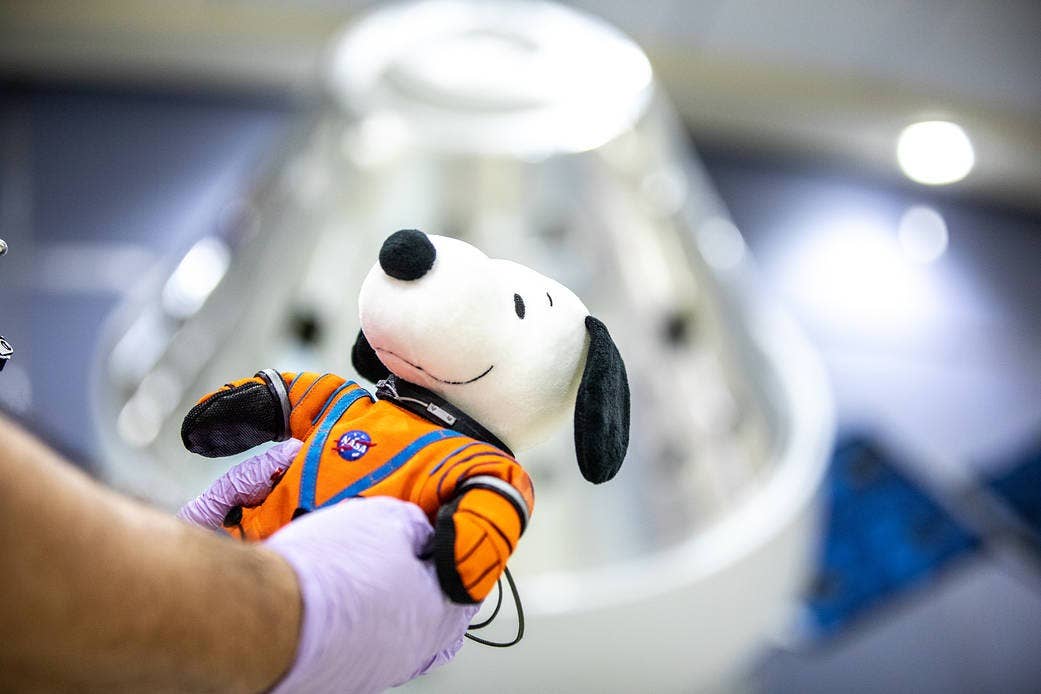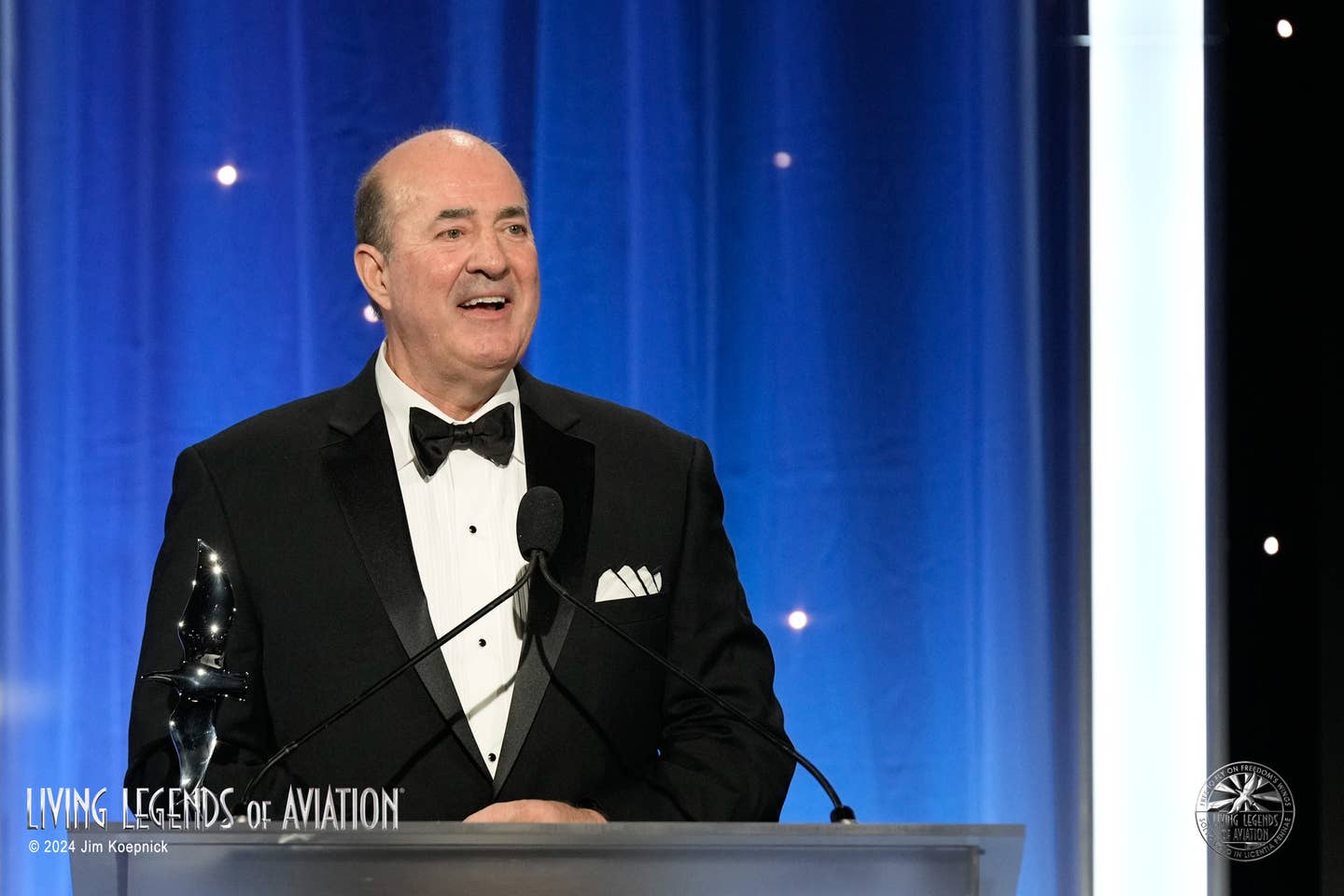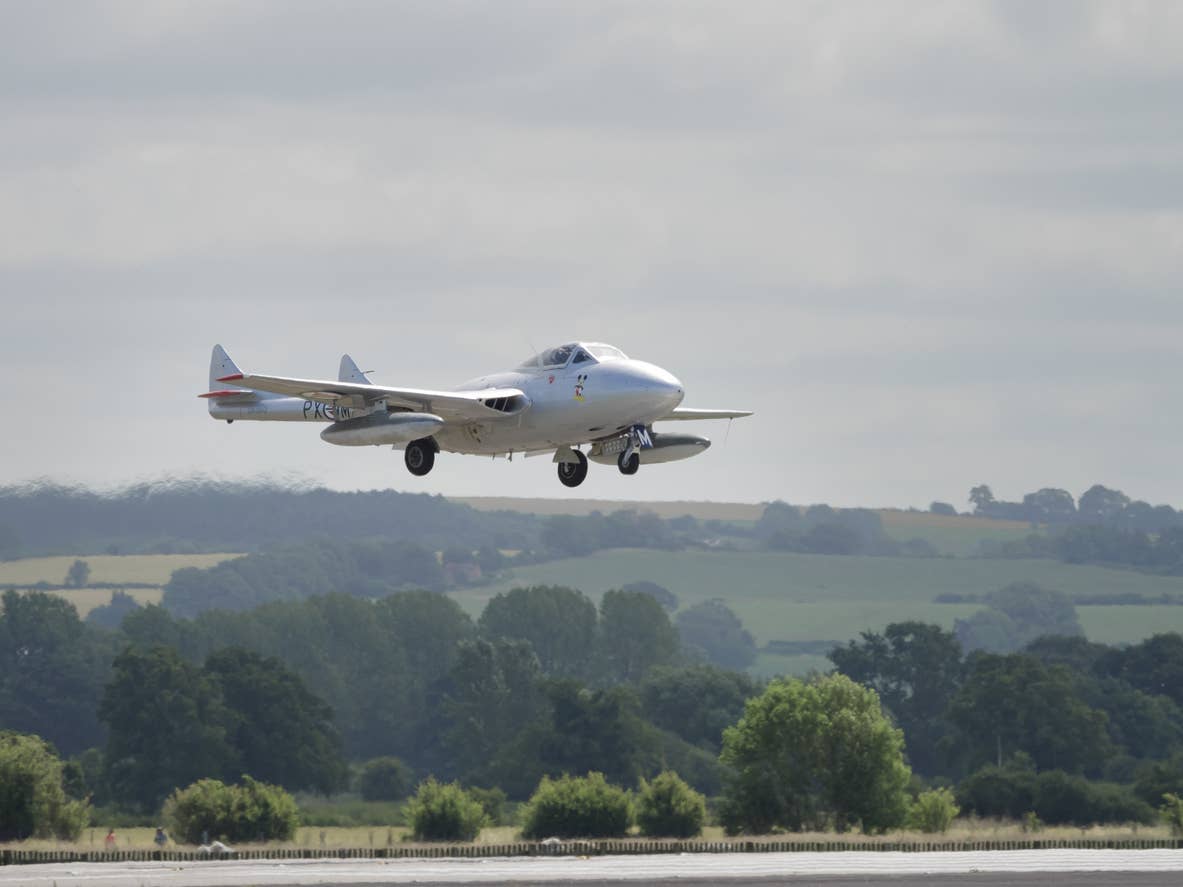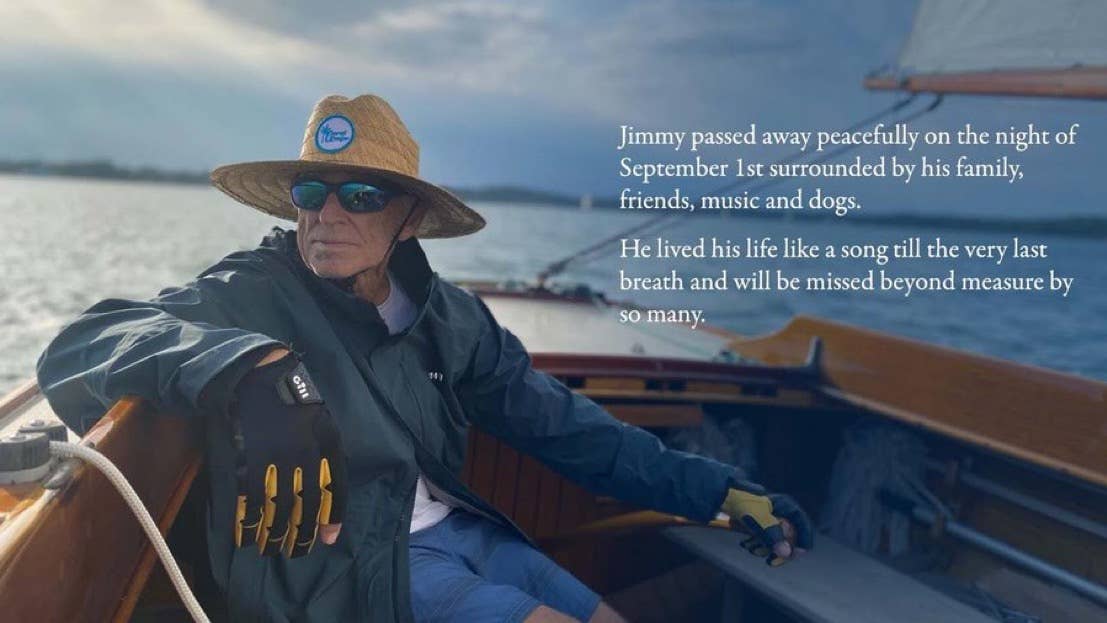
Spencer Tracy and Irene Dunne in A Guy Named Joe.
Top Gun was not the first aviation movie to inspire future aviators. Aviation as a plot device is as old as motion pictures themselves. We've selected a few vintage films that set the bar for aviation movies to come, sometimes because of the direction, sometimes because of the storylines, stars or production technique. Get the popcorn and settle back on the couch—and add these movies to your "must watch" list.
Wings (1927)
This action-war picture was made twice. The first time, it was produced in 1927 as strictly a war-action movie, then it was rewritten to add a love interest, re-shot, and re-released in 1929. The movie is set during World War I and depicts the lives and adventures of two pilots and the woman they are competing for. It won the first Academy Award for Best Picture, and the film launched the career of Gary Cooper, who has a bit part as Air Cadet White. The first product placement appears in this movie as Cooper's character tosses a half-eaten Hershey chocolate bar on his bunk then goes flying.
Realism was key for William Wellman’s productions of the day. Some 300 pilots and airplanes, many from the United States Army Air Corps, spent months at Kelly Field in San Antonio, Texas, during the filming of the epic. Two of the stars—Richard Arlen and John Monk Saunders—had served in World War I as aviators. The film is known for its realism in the air-to-air combat sequences. The film won two Oscars; the other was for Best Special Effects.
Hell's Angels (1930)
Hughes followed the success of Wings with Hell's Angels, which follows two brothers and a German friend from their school years at Oxford in England into the air service during World War I. When war breaks out, the brothers enter the British Royal Flying Corps while their German friend is conscripted into the German Air Force.
The movie took three years to film, in part, because it began as a silent film, then Hughes decided to remake it with sound, which was, at the time, a new technology.
Hughes' desire for realistic air combat scenes resulted in the deaths of three stunt pilots and a mechanic. Paul Mantz, one of the first stunt pilots and aerial coordinators in Hollywood, worked on the film. He allegedly told Hughes that the stunt in the final scene was too risky. Hughes responded by flying the aircraft in the final scene himself—and crashing, resulting in a skull fracture and facial injuries. The movie, shot primarily in black and white, was noted for a color-tinted scene when a German zeppelin burns.
Test Pilot (1938)
This romantic drama is based on a story written by Frank Wead, a former naval aviator. Clark Gable and Spencer Tracy play test pilots tasked with flying a new American bomber—the Y1B-17, an early prototype of the Boeing B-17 Flying Fortress. That's as much as we're going to tell you as to not spoil the plot. There are some good air-to-air action sequences, especially for Boeing fans.
A Guy Named Joe (1943)
Spencer Tracy returns to the silver screen as Pete Sandidge, a somewhat reckless bomber pilot flying out of England in the early days of World War II. Irene Dunne plays a pilot in the Air Transport Auxiliary, a civilian organization set up in Britain to ferry aircraft that tapped women for those flights. A mission goes bad and Pete ends up dead, but he is sent back to Earth to help Ted Randall (Van Johnson) a P-38 pilot in the South Pacific. If the plot sounds familiar, that's because in 1989 it was remade by Steven Spielberg as the movie Always, except instead of fighting in World War II, the pilots (Richard Dreyfuss, John Goodman, and Holly Hunter) are fighting wildfires in the Pacific Northwest.
Twelve O'Clock High (1949)
This 1949 film has Gregory Peck playing a hard-as-nails general charged with taking on an American bomber group stationed in England and whipping them into shape. The group is suffering from heavy casualties and low morale.
The movie begins with an American tourist finding a Toby Mug in a shop in England, which leads him to reminisce about his time in the 8th Air Force during World War II. The story is based on actual experiences of bomber crews, and it’s noted as one of the first movies to explore the psychological impact of combat. The movie employed the use of actual air combat footage.
In 1964, a new generation was introduced to Twelve O'clock High in the form of an episodic television show starring Robert Lansing as the general. Like the movie, the TV show was shot in black and white and used real combat footage from World War II.
Sky King (actually a radio and TV show that ran from 1946-60)
We would be remiss if we did not mention Sky King.
Sky King followed the adventures of former WWII pilot turned Arizona rancher Schuyler "Sky" King, who flew a twin-engine airplane (first, a Cessna T-50, and then a Cessna 310B), fought bad guys (rustlers, kidnappers, bank robbers, and later Russian spies and saboteurs), and rescued people, more often than not his niece Penny, who lived with her uncle at Flying Crown Ranch.
The show began as a radio program in 1946, and by 1951, it had made the jump to television. It remained on television in the form of a rerun until the mid-1960s. The storylines were simplistic, but there was a lot of fancy flying.
The production techniques used in the TV show—notably having the characters wear the same clothing in every episode so editing could be done without the costly reshooting of scenes—became standard procedure, and was used extensively in the 1950s and ’60s.
The show inspired generations of aviators. As proof of this, the next time you are at EAA AirVenture, go into the cafe in the Vintage Aircraft area at lunchtime and shout the opening line of the program: “FROM OUT OF THE CLEAR BLUE OF THE WESTERN SKY…,” and do not be surprised if people shout back: “IT'S SKY KING!”

Sign-up for newsletters & special offers!
Get the latest FLYING stories & special offers delivered directly to your inbox






